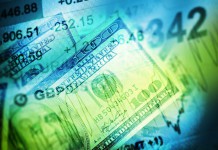 News trading has been very popular among traders. The sheer price-driven momentum can easily carry you over to the positive side, but be careful enough not to find yourself in a bad position. Today, I will explain all the essential fundamental factors of news trading strategies that you might want to try out on your MetaTrader account.
News trading has been very popular among traders. The sheer price-driven momentum can easily carry you over to the positive side, but be careful enough not to find yourself in a bad position. Today, I will explain all the essential fundamental factors of news trading strategies that you might want to try out on your MetaTrader account.
What Determines the Exchange Rate
The governments introduce fiscal policies to determine the actions required to achieve a particular set of economic goals. This could include a set of actions such as but not limited to:
- Setting levels of taxation for government revenues;
- Adjusting government expenditures to contract or expand economic activity;
- Managing government budgets to minimise government debt;
- Labour market reforms, such as retirement ages, pension fund contributions, minimum wage;
- National ownership of public assets and privatisations to eliminate government debt and improve economic efficiency.
A government budget is the key measure, and a government document presenting its proposed revenues and spendings for a financial year. During periods of accrued federal government deficits, this results in national debt. On the flipside, a budget surplus occurs when federal government revenues exceed outflows, and this could be used to pay down national debt, or in surplus accounts for future deficits. When federal government inflows equal outflows, the budget is said to be balanced.
In addition, Central Banks, often independent of governments, implement monetary policies to achieve a similar set of economic goals, largely to stimulate or contract economic activity. This is usually done by adjusting the short-term borrowing rate of a Central Bank, and this is usually related to whether Central Bank employment and inflation objectives are being met.
US Quantitative Easing (QE)
One of the most important monetary policies you might have heard of is a quantitative easing. The term is usually used among economists and during important pressers that chiefs of Central Banks hold while addressing the future guidance on economic policies. In short, QE, or large-scale assets purchases, is a monetary policy where a Central Bank creates new electronic money in order to purchase different financial assets to stimulate the economy, usually in order to lower interest rates and get the inflation to a predetermined target.
According to my knowledge, all Central banks in most developed nations such as the United Kingdom, the United States, Japan, and the EU are prohibited from buying government debt directly from the government and must instead buy it from the secondary market.
In order to determine whether a Central Bank has monetised debt, it is necessary to compare its performance relative to its stated objectives. For that reason, most Central Banks have adopted an inflation target, and, usually during press conferences, the price gets very volatile when the inflation target is mentioned.
QE happens when government bonds are bought, so that there is more cash in the economic system to facilitate further private lending and investments to stimulate economic activity.
What to Follow During the QE
In the past, when the ECB announced QE measures, I was watching German bund yields. I also noticed a discrepancy in the data you should be paying attention to. German bund yields went up a bit during the day, while global equities were tanking. I concluded that if German/global equities are tanking, and German government bond yields are increasing, where is the money going? I’ve seen this happen before, so I thought, surely the money is not going to the government bonds of other nations, it’s certainly not going to other equities as they are all going down. My conclusion was that the money moved to cash. When that happens, usually we see a rebound in equities.
Fed Hike and Treasuries
A very important thing to watch out for and many traders are not aware of is 12 month treasuries. It is the equivalent of the Federal Cash Rate due to its low-risk investment being a government bond. For example, if treasuries are 0.50% and the current cash rate is 0.25%, the market expects the cash rate to move to 0.50% for the year.
Inflation levels and trends – the CPI
The CPI is watched all the time by most Central Banks as a key monetary policy target objective, regardless of there is QE or not. In short, the inflation is the increase in prices of services and goods over time.
Central Banks attempt to stop severe inflation, along with severe deflation, in an attempt to keep the excessive growth of prices to a minimum.
- To increase a currency’s value, a Central Bank can buy currency and hold it in its reserves. This reduces the currency supply available and could lead to an increase in valuation.
- To decrease a currency’s value, a Central Bank can sell its reserves back to the market. This increases the currency supply and could lead to a decrease in valuation.
According to my knowledge, most Central Banks will try to sustain an inflation rate of 2-3%.
Economic Growth – the GDP
There is no economic growth without a good GDP. A country’s economic growth is usually indicated by an increase in that country’s gross domestic product, or GDP. The GDP is an economic model that reflects the value of a country’s output. It’s the broadest measure of economic activity and the primary gauge of the economy’s health.
Unemployment Data and the NFP
The CPI and unemployment data are the main measures that CBs utilise to implement monetary policies. The NFP (Nonfarm Payrolls) is especially important for the USD. It represents the change in the number of employed people during the previous month, excluding the farming industry. Due to that specific reason, the unemployment data is a very important signal of overall economic health because consumer spending is highly correlated with labour market conditions.
Export and Import Market Prices – Trade Balance
International trade flows can also influence supply and demand for a currency. When a country exports more than it imports (a positive trade balance), foreign buyers must exchange more of their currency for the currency of the exporting country. This increases the currency demand.
For a deeper look at the specific news trading strategies and the thorough explanation of which news can be traded, please watch the video below:
London Fix
Last but not the least, we need to mention the so-called ‘London Fix’.
The London Fix is a predefined time of day when orders from both sides of the market are aggregated together, in which banks guarantee investors a certain rate for their currency trades. The price is determined on the basis of the buy/sell transactions that usually happen during the one-minute period buffer, i.e., 30 seconds to the either side of 4 PM London time. The London Fix remains the most popular fixing. Have in mind that big fund managers and investors usually place their orders beforehand, so that a trader from the bank already knows how much they have to buy/sell. Using this information, they can front run orders ahead of the fixing time, at the expense of the client.
Take a look on Admiral Market’s offer and let yourself to be surprised>>>
By monitoring actions around the London Fix, you can find a tradable pattern. For example, on 31 October 2016, there was quite a move on the GBP at the London Fix. Usually, a fix can fade back the price movement to the trend of the day, but it can also form a new trending pattern for that day, especially if the last-minute monthly and quarterly flows are going through the London Fix.

Source: GBP/USD M15 Chart, Admiral Markets MT5 Supreme Edition
I sincerely hope that my article and video will help you fully understand the importance of fundamental data.
Cheers and safe trading,
Nenad

















